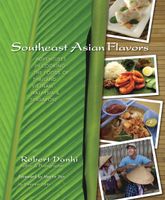Mangosteen
Garcinia mangostana
By Robert Danhi
Published 2008
Known as the “Queen of Fruits,” this absolutely succulent fruit has just made its debut in the U.S. Topped with a green crown of leaflets, this billiard ball-sized fruit has a thick purple skin that encases opaque, white segments of honey-sweet flesh. These delicate gems yield to the slightest pressure, and almost dissolve on the palate as they relinquish their mango/ pineapple-like flavor. On the bottom of each fruit, a green, spoked “nib” indicates the number of segments inside. Browning on the exterior is not indicative of their eating quality. Be careful of the colorful sap that the skin exudes, as it stains fabric. They are always eaten raw and are not used in cooking. Prohibited for decades from entry into the U.S., they have finally been granted access in two ways. Imports from Thailand are deep-frozen and then thawed for sale. These are not worth buying, because freezing destroys the delicate texture of the fruit and causes the skin’s pigment to taint the snow-white flesh. But fresh specimens, imported with new regulations or grown in tropical U.S. territories, have reached maturity and are being legally sold in specialty markets on the mainland. They’re an expensive rarity right now, but will someday be accessible to all. Thai: mung kuut; Malay: manggis; Vietnamese: măng-cụt
Part of
Advertisement
Related Recipes
-
-
-
-
Related Reference
-
-
-
-
Advertisement



